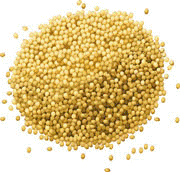International Sorghum and Millet Collaborative Research Support Program (INTSORMIL CRSP)
Date of this Version
8-5-2008
Document Type
Article
Citation
INTSORMIL Impact (August 5, 2008)
Abstract
Sureño sorghum- the white grain makes great tortillas and the forage and grain are a preferred livestock feed. Whereas most sorghum cultivars are gown for either silage or grain, Sureño sorghum is used for both. Because of its dual purpose qualities as a good grain for livestock and human consumption and as a forage for cattle, Sureño is popular with cattle producers and the bakery industry and is spreading throughout Central America.
The sweet ensilage of Sureño sorghum is preferred by the Central American cattle producers because of its high nutritious value, high energy value and high production of 71 MT/ha. The grain has high value as a livestock feed and as a human food and grain yields are high at 3.8 t/ha.
Sureño, an open pollinated variety, developed by the Texas Agricultural Experiment Station with INTSORMIL support and collaborations in Honduras, was released for commercial cultivation in 1988. It was further developed and promoted through the INTSORMIL funded CENTA sorghum breeding program by INTSORMIL Central American Regional Coordinator, Rene’ Clara in El Salvador where it was named CENTA S-3 and released in 2004. It will be released in Nicaragua in 2009. Some of the qualities that make Sureño popular with Central American sorghum producers are its resistance to lodging and tolerance to grain mold and to the foliar diseases Cercospora sorghi, Gloeocercospora sorghi, rust, anthracnose, Helminthosporium turcicum and downy mildew.


